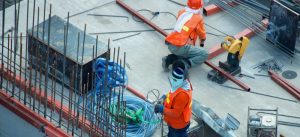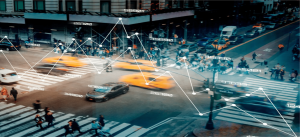The integration of
artificial intelligence (AI) and
robotics into the construction industry is fundamentally reshaping the way we design, build, and maintain infrastructure. These cutting-edge technologies are driving innovation, improving efficiency, and addressing critical challenges such as labor shortages, rising costs, and the demand for sustainable building practices. In this article, we delve deep into how AI and robotics are transforming construction, enabling the industry to build smarter, faster, and more sustainably.
The Role of AI in Modern Construction
Enhanced Project Planning and Design
AI-powered tools are revolutionizing the planning and design phase of construction projects. With advanced
Building Information Modeling (BIM) systems, AI can analyze vast datasets to create accurate and optimized project plans. This includes predicting potential bottlenecks, identifying cost-saving opportunities, and ensuring structural integrity. These tools also enable real-time collaboration among stakeholders, making the planning process more streamlined and efficient.
Predictive Analytics for Risk Management
AI excels in analyzing historical data to predict future risks. Construction projects often face challenges such as delays, budget overruns, and safety hazards. By using predictive analytics, AI can forecast these issues and suggest proactive measures. For example, machine learning algorithms can evaluate weather patterns, material availability, and workforce productivity to minimize disruptions.
Smart Resource Management
Effective resource allocation is a critical aspect of construction. AI systems optimize the use of materials, labor, and equipment, reducing waste and improving project timelines. AI can also monitor inventory levels in real-time, ensuring that resources are available when needed while minimizing excess stock.
The Impact of Robotics in Construction
Automating Labor-Intensive Tasks
Robotics is automating repetitive and labor-intensive tasks, such as bricklaying, concrete pouring, and excavation. These robotic systems work with high precision and speed, reducing the time and effort required to complete these tasks. For instance, autonomous bricklaying robots can lay thousands of bricks in a single day, far surpassing the capabilities of manual labor.
Enhanced Safety and Hazard Mitigation
Construction sites are often fraught with risks, but robotics is helping to create safer working environments. Robots can perform dangerous tasks, such as demolition, high-altitude work, and hazardous material handling, reducing the risk of injuries to human workers. Additionally, drones equipped with cameras and sensors are used for site inspections, providing a safer and more efficient alternative to traditional methods.
Precision and Quality Assurance
Robotic systems deliver unparalleled precision, ensuring high-quality construction work. They minimize human errors and maintain consistent standards throughout the project. Automated machinery, such as 3D printers, can produce intricate building components with exceptional accuracy, enhancing the overall quality of construction projects.
The Synergy of AI and Robotics in Construction
Real-Time Monitoring and Feedback
The combination of AI and robotics enables real-time monitoring and feedback on
construction sites. AI algorithms analyze data from robotic sensors to assess project progress, detect anomalies, and provide actionable insights. This synergy ensures that projects stay on track and meet quality standards.
Autonomous Construction Vehicles
Autonomous vehicles, such as self-driving bulldozers and excavators, are revolutionizing earthmoving and site preparation. These vehicles use AI for navigation and robotics for task execution, ensuring precise and efficient operations. They also reduce fuel consumption and emissions, contributing to sustainable construction practices.
Driving Sustainability in Construction
Energy-Efficient Practices
AI and robotics are promoting energy efficiency in construction.
AI systems analyze building designs to identify energy-saving opportunities, such as optimal insulation and lighting solutions. Robotics enables the implementation of these solutions with precision, ensuring that buildings meet sustainability standards.
Reducing Material Waste
Construction generates significant waste, but AI and robotics are minimizing this impact. AI-powered design tools optimize material usage, while robotic systems execute construction tasks with minimal waste. These technologies are instrumental in achieving zero-waste construction goals.
Challenges and Opportunities
While AI and robotics are transforming construction, the industry faces challenges such as high implementation costs, technical complexities, and the need for skilled personnel. However, the benefits far outweigh these challenges. By embracing these technologies, construction companies can enhance productivity, reduce costs, and deliver superior projects.
The Future of AI and Robotics in Construction
The future of construction lies in the seamless integration of AI and robotics. As these technologies continue to evolve, we can expect even greater advancements, such as fully autonomous construction sites, AI-driven design creativity, and robotics-enabled infrastructure maintenance. These innovations will redefine the construction industry, making it more efficient, sustainable, and resilient.






1 Comment
alkass
great